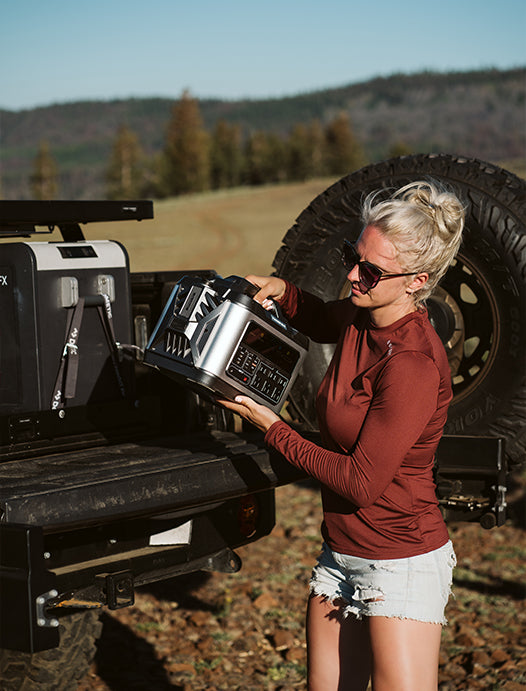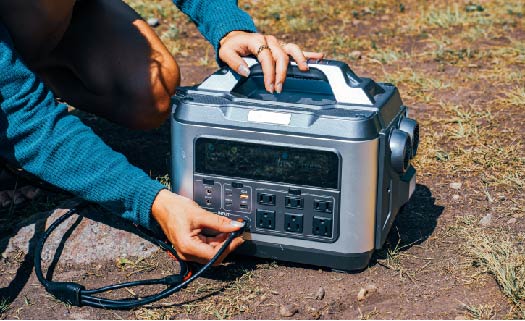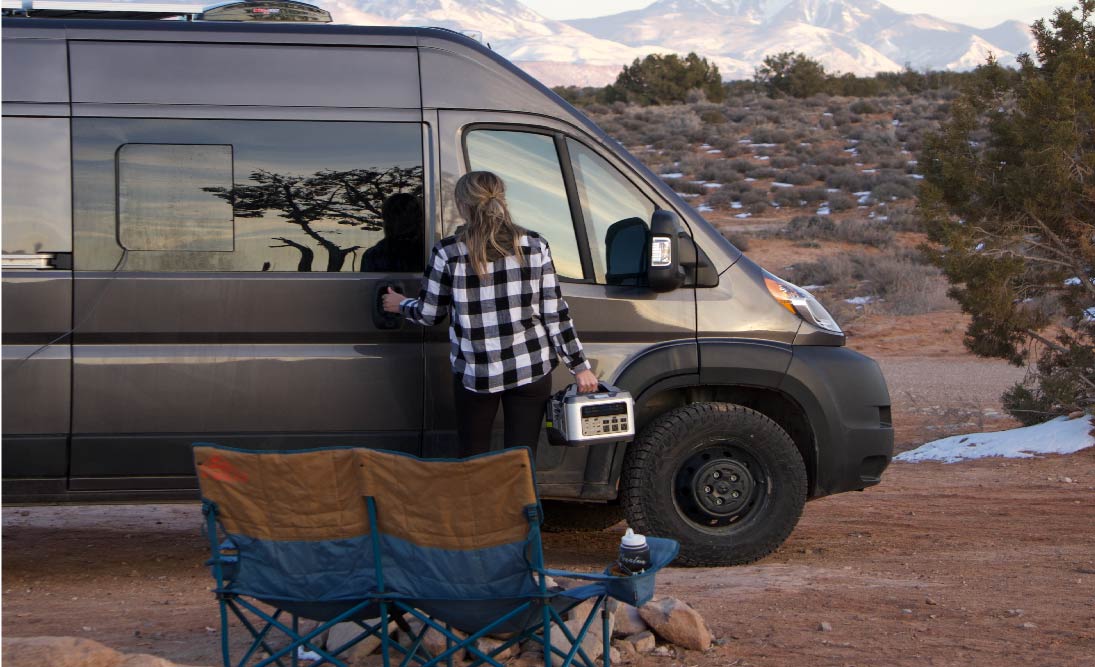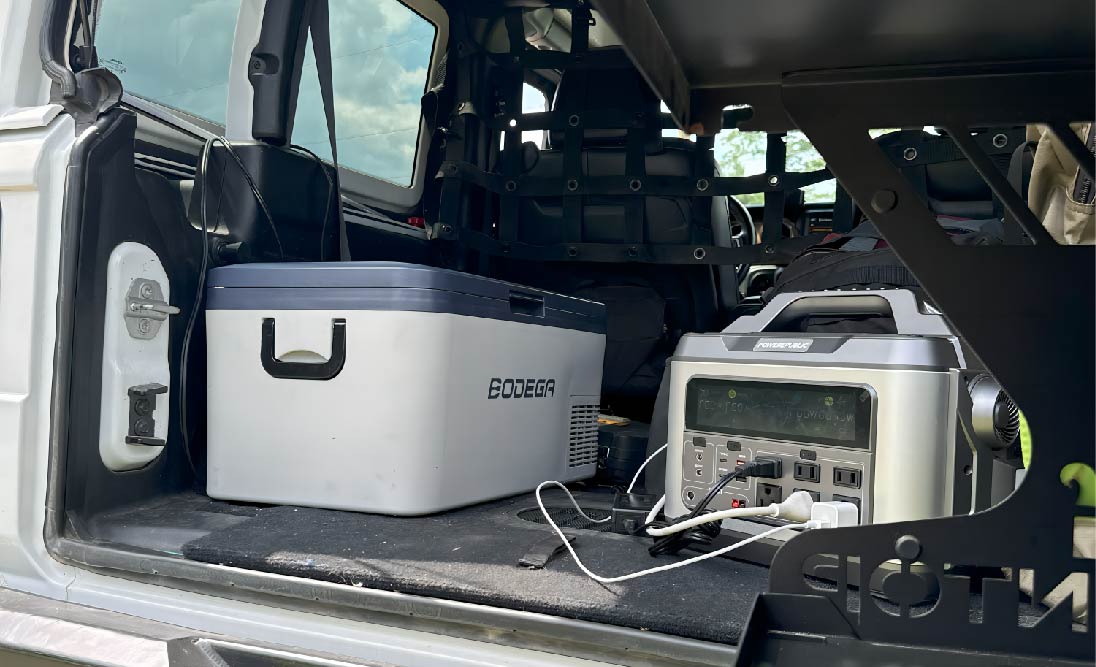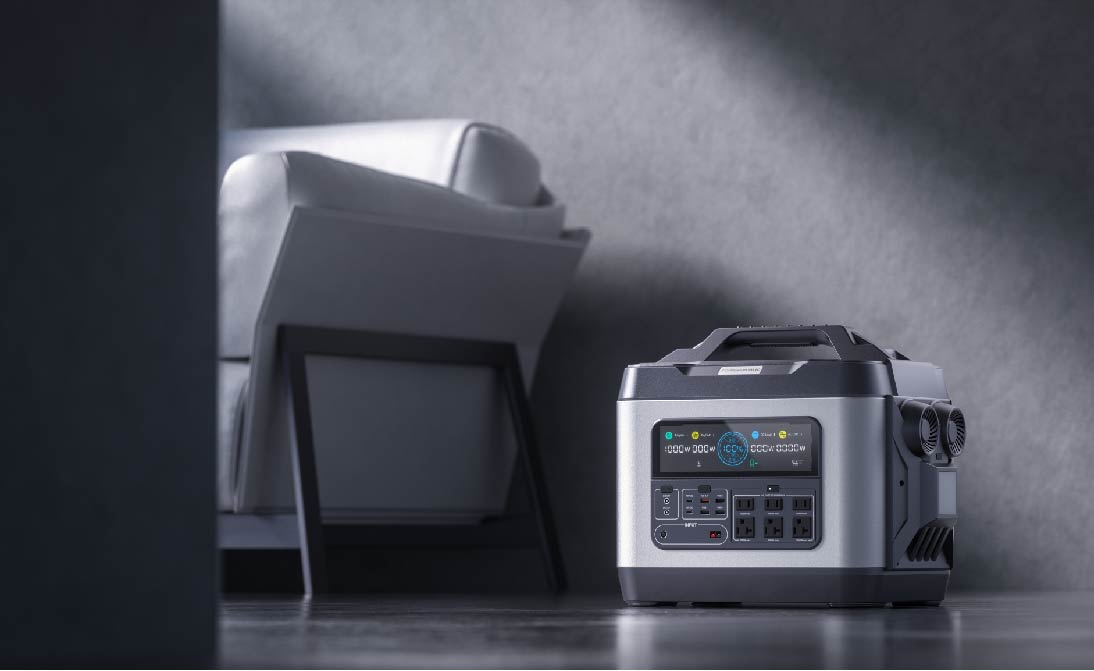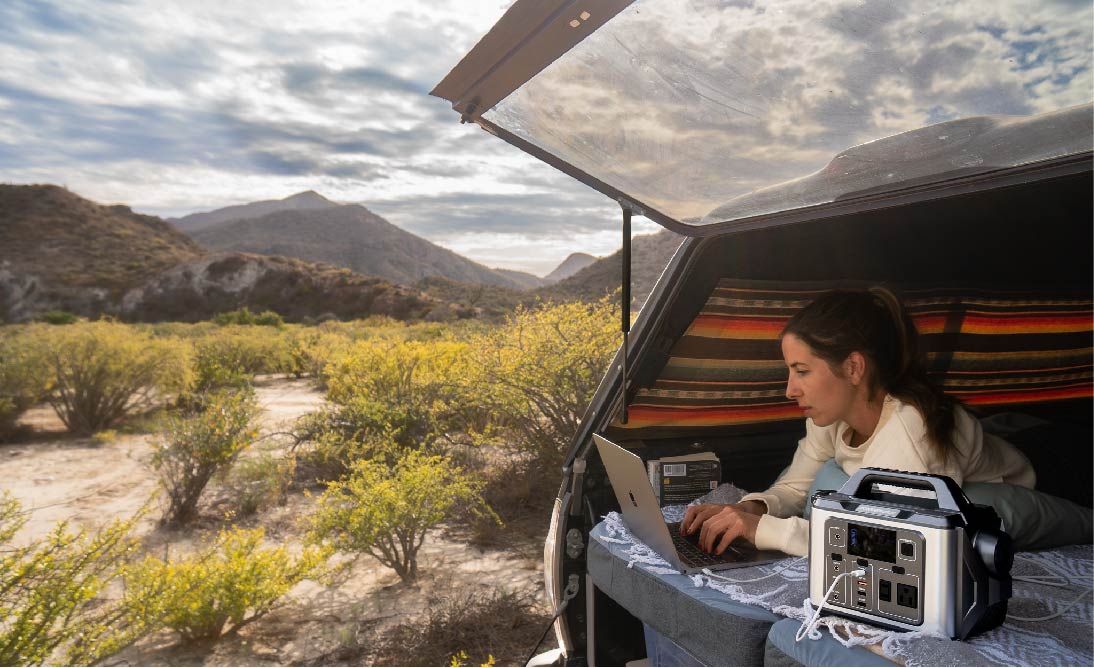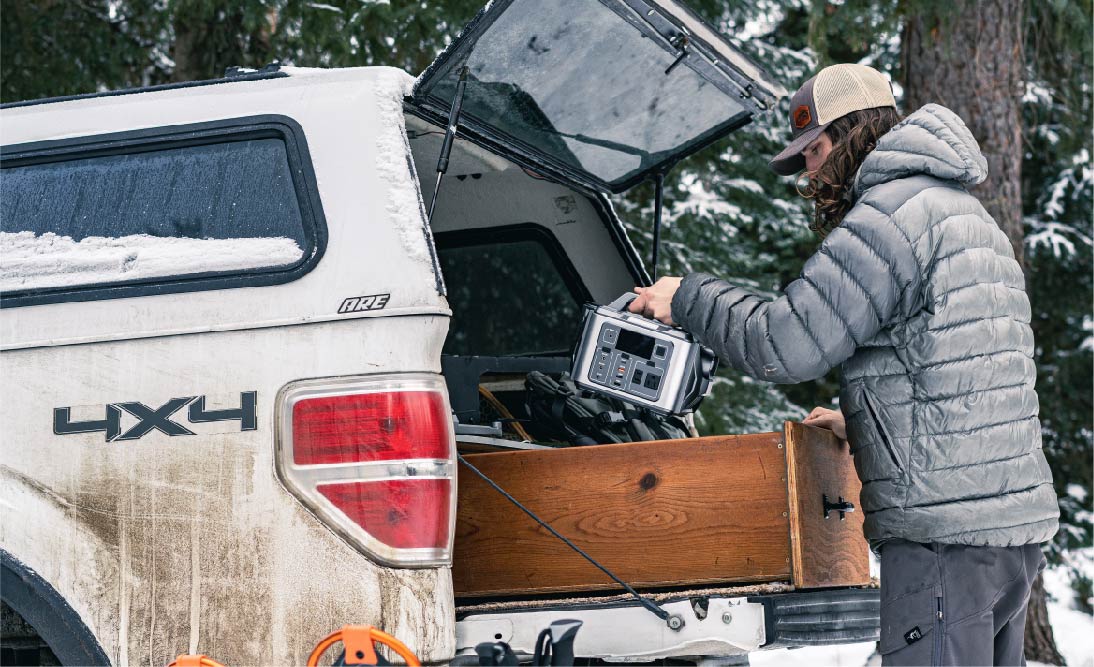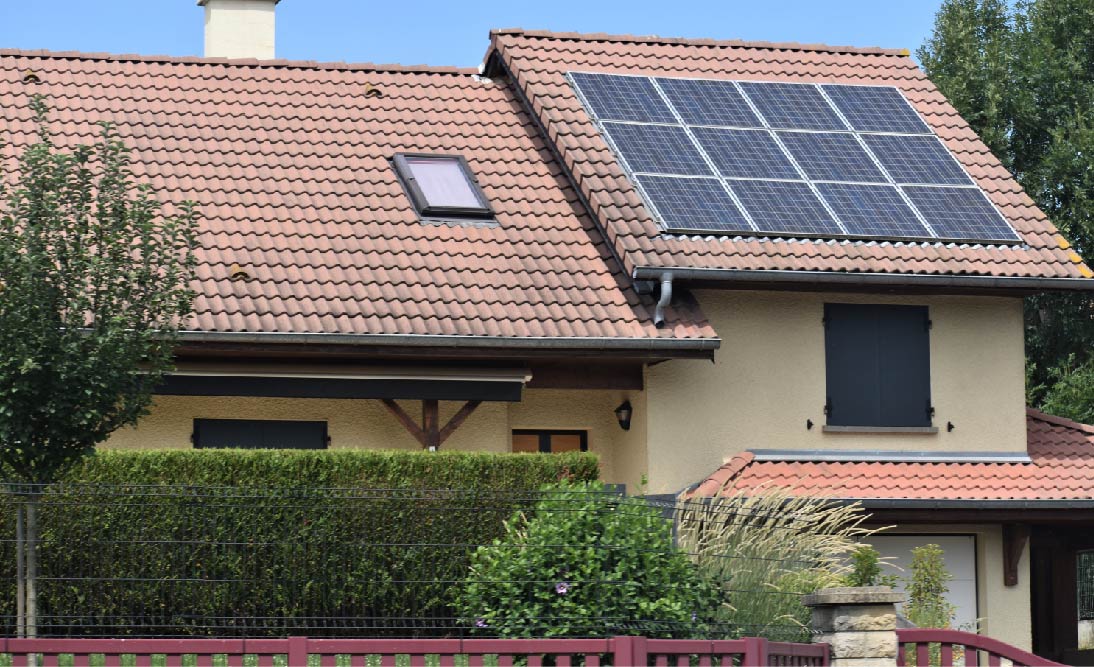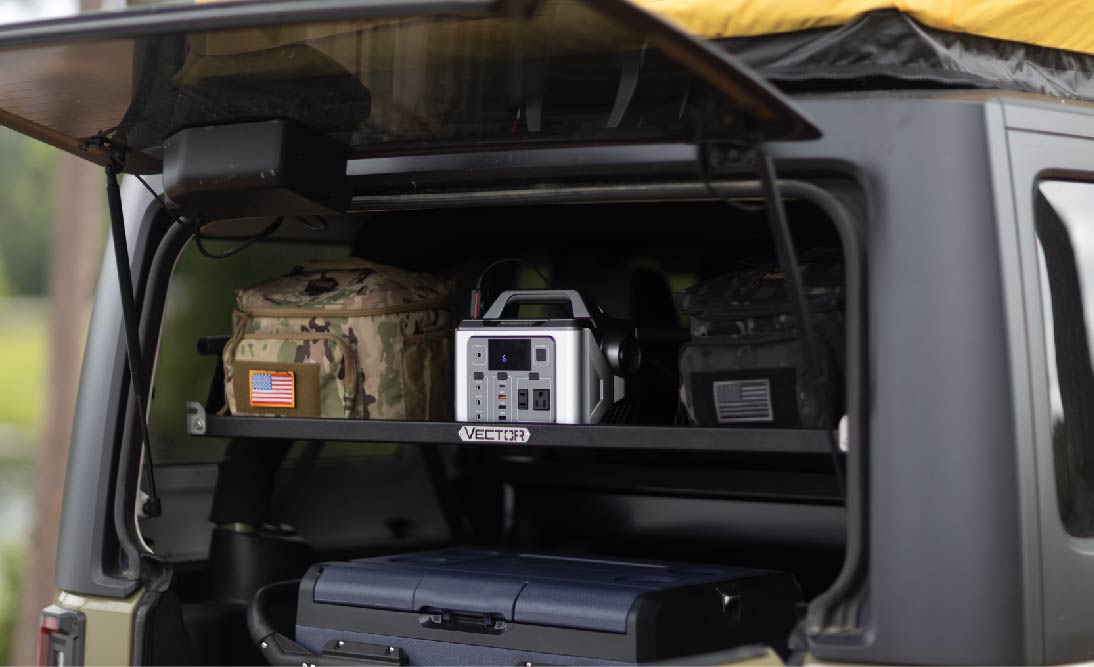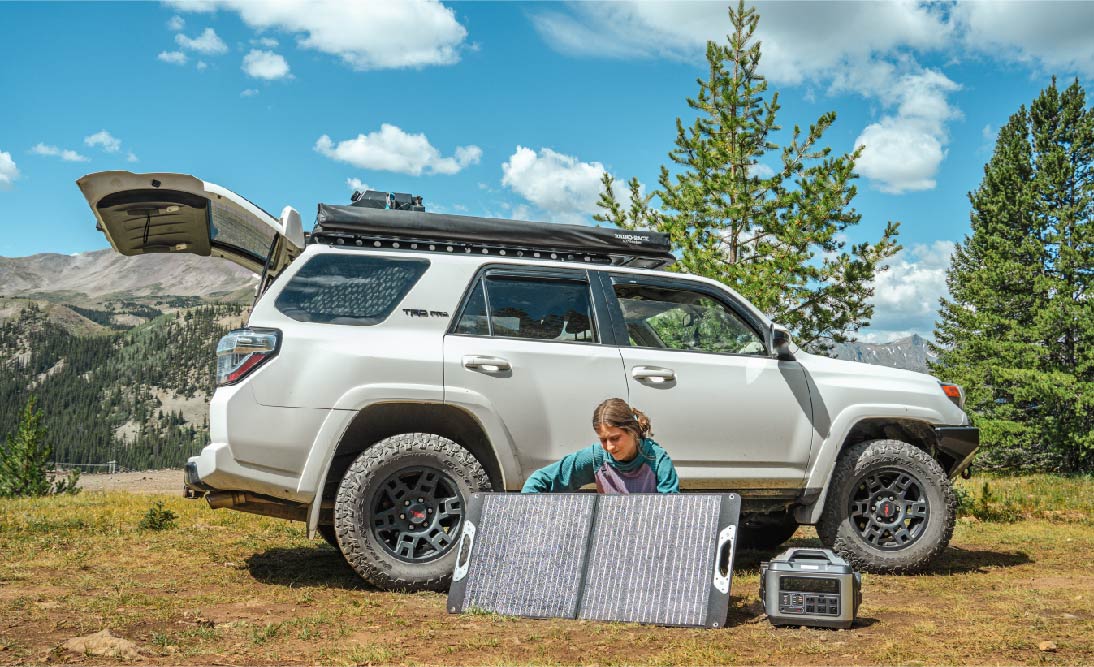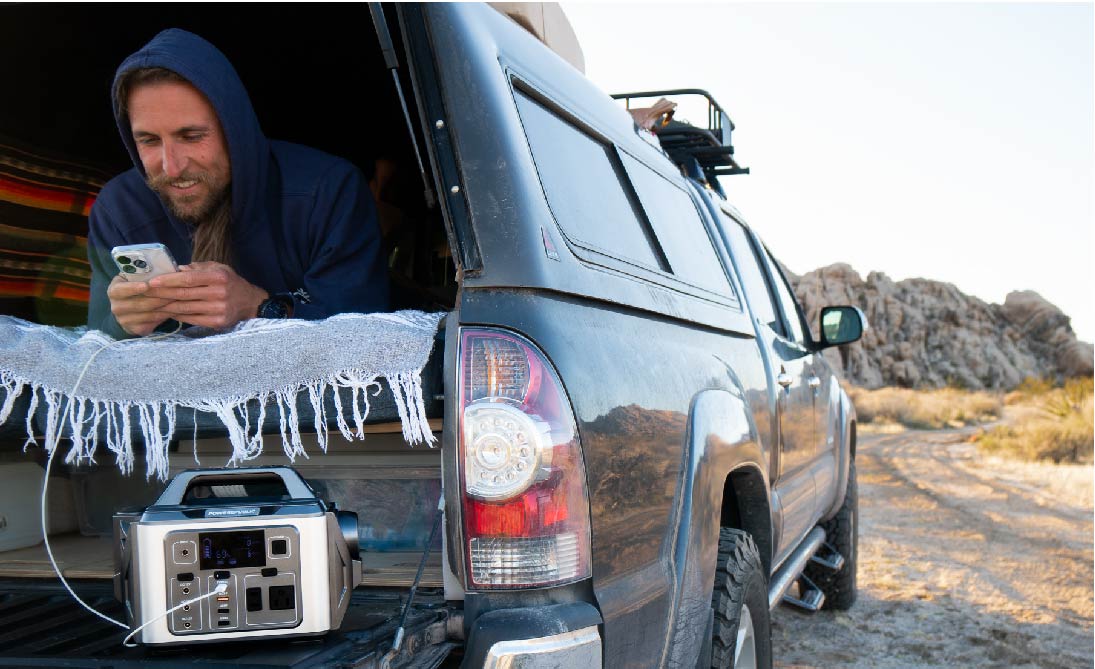Table of Contents:
Camping is a great way to explore the unknown, enjoy nature, and enhance mental health. We no longer live in the 80s and 90s when cell phones were not developed. Nowadays, no matter where your adventures take you, ensuring your essential devices are charged and ready to use is crucial. That's why having a reliable power source while camping is a must-have. When heading outdoors, portability and convenience are key to making the trip better, and that's where portable power banks come into play. These devices are compact and easy to take with you, making them one of the best options for camping power solutions.
In this guide, we will provide a brief introduction to what a portable power bank is, the reasons for having one during camping, its limitations, how to choose the best portable power bank for your needs, and address some frequently asked questions. We hope you find this guide useful, beneficial, and informative.
What is a Portable Power Bank?

A portable power bank, also known as a mobile charger or a portable power station, is a portable device designed to store electrical energy and provide it to other devices when needed.
Its primary purpose is to charge or power electronic devices such as smartphones, tablets, cameras, or other USB-powered gadgets while on the go, especially in situations where access to a traditional power source is limited or unavailable. Having a reliable and long-lasting portable power bank for camping will put your mind at ease as you won’t stressed about running out of power and electricity for your essential items.
Here's a more detailed breakdown of the components and functionality of a portable power bank for camping:
|
Factors |
Description |
|
Battery Cells |
Rechargeable lithium-ion or lithium-polymer cells that store electrical energy. |
|
Capacity |
Measured in mAh or Wh, it indicates the amount of energy the power bank can store. |
|
Input and Output Ports |
USB ports for device charging, and a micro-USB, USB-C, or Lightning port for recharging the power bank. |
|
Output Voltage/Current |
USB ports deliver power at a standard 5V, with varying currents (measured in A); some offer fast-charging options. |
|
Charging Circuitry |
Internal circuitry that regulates charging, preventing overcharging or overheating for safe and efficient use. |
|
Indicator Lights |
LED lights display the remaining battery capacity or charging status, aiding you in managing power bank usage. |
|
Form Factor/Design |
Varied shapes and sizes based on capacity, use, and additional features like built-in cables or solar panels. |
|
Additional Features |
Extras like wireless charging, multiple ports, built-in flashlights, or water resistance catering to your preferences. |
Understanding these components and features can help you choose the best portable power bank for camping that aligns with your specific requirements for capacity, charging speed, and overall usability during camping or other outdoor activities.
Why Campers Need a Portable Power Bank For Camping?

Campers can benefit significantly from using a portable power bank during their camping trips for several reasons:
|
Use Case |
Description |
|
Device Charging |
In today's digital age, campers often bring essential electronic devices such as smartphones, cameras, GPS devices, or portable speakers. A portable power bank ensures that these devices remain charged, providing communication, navigation, and entertainment throughout the camping experience. |
|
Emergency Preparedness |
In case of emergencies, a charged phone can be a lifeline. A portable power bank acts as a reliable power source, allowing campers to make emergency calls, access maps, or use other critical apps when needed. |
|
Lighting Solutions |
Some portable power banks come equipped with built-in LED lights or can be used to charge portable LED lights. This is particularly useful during nighttime activities, helping campers illuminate their surroundings without relying solely on traditional lanterns or flashlights. |
|
Entertainment on the Go |
Whether it's listening to music, watching movies, or playing games, a portable power bank ensures that campers can enjoy their preferred forms of entertainment without worrying about draining the battery of their devices. |
|
Navigation and GPS |
For campers relying on GPS navigation apps or handheld GPS devices, a portable power bank ensures a continuous power supply, preventing disruptions in navigation and allowing campers to explore confidently. |
|
Capturing Memories |
Campers often document their experiences through photos and videos. A charged camera or smartphone enables them to capture the beauty of the outdoors and preserve memories without the concern of running out of battery power. |
|
Extended Camping Duration |
For longer camping trips, a portable power bank extends the duration of the camping experience by ensuring that electronic devices remain operational. This is especially important for those who enjoy remote or off-grid camping. |
|
Multipurpose Use |
Portable power banks are versatile and can be used to charge a variety of devices beyond electronics, including flashlights, headlamps, or even small camping appliances, enhancing overall camping convenience. |
In short, having a portable power bank for camping is a valuable addition to a camper's gear, providing a reliable and portable power source that enhances safety, convenience, and the overall enjoyment of the camping experience.
Limitations of Using a Portable Power Bank For Camping?

While portable power banks offer valuable benefits for campers, it's important to be aware of certain limitations associated with their use during camping expeditions:
|
Limitations |
Description |
|
Limited Capacity |
Portable power banks have a finite capacity. Once depleted, they require recharging. Campers may need to manage power usage to ensure the power bank lasts throughout the entire trip, depending on its capacity and the number of devices being charged. |
|
Recharging Dependency |
To sustain a power bank's functionality, campers need access to a power source for recharging. In remote or off-grid camping locations, finding a suitable power supply for recharging can be challenging, potentially limiting the overall usage of the power bank. |
|
Weight and Space Considerations |
While portable, power banks add weight to camping gear. Campers must allocate space in their backpacks for the power bank, becoming a factor for backpackers aiming to minimize load and optimize space. |
|
Weather Sensitivity |
Extreme weather conditions can impact the performance of lithium-ion batteries commonly used in power banks. Campers should be cautious about exposing power banks to harsh weather, affecting both charging efficiency and overall battery life. |
|
Battery Aging |
Over time, the battery inside a portable power bank may experience a reduction in performance and capacity. Campers should be mindful of the power bank's age and condition, as this can affect its ability to hold a charge and provide the necessary power. |
|
Cannot Power High-Power Devices |
Power banks are generally designed for smaller electronic devices like smartphones and tablets. They may not be suitable for charging high-power devices such as laptops or certain camping equipment that demand more substantial power sources. |
Understanding these limitations allows campers to make informed decisions about when and how to use portable power banks during camping trips. Despite these considerations, portable power banks remain a valuable asset for enhancing the camping experience, provided campers plan and adapt to these constraints accordingly.
How To Find Out The Best Portable Power Bank For Camping?

Selecting the best portable power bank for camping involves considering various factors to ensure it meets your specific needs. Here's a detailed guide, including camping examples and calculations for each crucial factor:
1. Assess Your Power Requirements:
-
Explanation: Understand the total power needs of your camping devices throughout the trip.
-
Example:If your need to charge your phone(10W), GPS device(5W), camera(10W), LED light(10W), and laptop(20W), the total power would be: 10W+5W+10W+10W+20W=55W. The more devices you want to power, the higher the total power you will need.
2. Evaluate Battery Cells:
-
Explanation: Opt for portable power banks with high-quality rechargeable lithium-ion or lithium-polymer cells for better performance.
3. Determine Capacity:
-
Explanation: Choose a portable power bank capacity (Wh) that comfortably covers your assessed power requirements.
-
Example: If your total power requirement is 55W(from above), and you want to use these devices for 5 hours per day during camping, the total capacity is 275Wh. Consider a power bank with a capacity of at least 300Wh for a safety margin. The longer you want to power these devices, the higher the capacity you need to handle them.
4. Assess Input and Output Ports:
-
Explanation: Ensure the portable power bank has sufficient USB ports for all your devices and a compatible recharging port.
-
Example: If you have a smartphone (USB-C), camera (Micro USB), and portable speaker (USB-A), ensure the portable power bank has these ports.
5. Match Output Voltage/Current:
-
Explanation: Match the portable power bank's output voltage (5V) with your devices and consider varying currents for optimal charging.
-
Example: If your smartphone supports fast charging at 2A, choose a power bank with a USB port capable of delivering at least 2A.
6. Consider Form Factor/Design:
-
Explanation: Consider the shape, size, and weight of the portable power bank based on your camping needs and available space.
-
Example: If you're backpacking, opt for a lightweight and compact power bank that fits easily into your backpack.
7. Explore Additional Features:
-
Explanation: Explore extras like wireless charging, built-in flashlights, or water resistance based on your preferences.
-
Example: If you often camp in the dark, a portable power bank with a built-in flashlight can be a valuable addition.
8. Solar Panel Compatibility:
-
Explanation: Search for portable power banks that can be recharged via portable solar panels. This allows you to recharge the portable power bank wherever you go for longer use.
By following these steps and examples, you can make a well-informed decision on the best portable power bank for your camping needs, ensuring a reliable and convenient power source for your essential devices.
Best Portable Power Bank For Camping

As mentioned in the introduction, where portability and convenience are highlighted as key factors for camping, POWEREPUBLIC offers two excellent portable power banks: the T306 and the T1200 portable power stations. These devices perfectly combine portability and functionality, making them two of the best portable power banks for camping. Both models can be recharged via portable solar panels, AC adapters, or car sockets.
To better visualize their features and functionality, refer to the table below:
|
Models |
Specs & Features |
Camping Gears |
Estimated Working Time(hours) |
|
300W/296Wh 600W Surge Power Lithium-ion Batteries with 800+ Cycles Super Handy - Less than 10 Ibs 10 Output Ports LED Flashlight on the Back Solar Panel Compatibility Rugged-Looking and Durable |
GPS Devices(5W) Smartphones(5-15W) Digital Cameras(5-15W) Portable LED Lanterns(3-10W) Camping Stove(10W) Rechargeable Headlamps(2-5W) Portable Speaker(5-20W) Laptop(30-100W)
|
GPS Devices: 50 Smartphones: 16.5 - 50 Digital Cameras: 16.5 - 50 Portable LED Lanterns: 25 - 83.5 Camping Stove: 25 Rechargeable Headlamps: 50 - 125.5 Portable Speaker: 12.5 - 50 Laptop: 2.5 - 8
|
|
|
1200W/1110Wh 2600W Surge Power Lithium-ion Batteries with 800+ Cycles 31 Ibs(14kg) 13 Output Ports LCD User-Friendly Screen LED Flashlight on the Side Solar Panel Compatibility Aluminum-alloy Body Rugged-Looking and Durable |
GPS Devices (5W) Smartphones (5-15W) Digital Cameras (5-15W) Portable Speaker (5-20W) Laptop (30-100W) Blenders(300-500W) Toasters(800W) |
GPS Devices: 188.5 Smartphones: 63 - 188.5 Digital Cameras: 63 - 188.5 Portable Speaker: 47 - 188.5 Laptop: 9.5 - 31.5 TVs: 9.5 - 18.5 Blenders: 1.5 - 3 Coffee Machines: 1.5 Mini-Fridges: 9.5 - 18.5 Electric Blankets: 9.5 - 12.5 Toasters: 1 |
Please note that:
-
The working time is estimated using the formula: Capacity(Wh)*0.85(conversion rate) / Power of the device(W).
So if you are searching for the best portable power bank, choose POWEREPUBLIC for a reliable and efficient camping power solution, and embark on your outdoor adventures with confidence.
FAQ I: How To Charge a Portable Power Bank?

Answer: You can charge a portable power bank via AC chargers/AC adapters. Some portable power banks with larger power output and capacity can be charged via solar panels or car sockets.
Always refer to the manufacturer's guidelines and specifications to ensure proper charging and to avoid damaging the power bank. Additionally, different power banks may have varying compatibility with charging methods, so it's essential to check the user manual for specific instructions.
FAQ II: Can You Take a Portable Power Bank On a Plane?

Answer: It depends. There are regulations to consider:
-
Carry-On Only: Most airlines prohibit carrying power banks in checked luggage. It would be best if you kept them in your carry-on bag.
-
Capacity Limits: Some airlines impose restrictions on the capacity of power banks. For example, the Federal Aviation Administration (FAA) in the United States allows power banks up to 100 watt-hours (Wh) without airline approval. So if your portable power bank is more than 100 watt-hours, you cannot take it with you on air.
-
Quantity Limits: Airlines may also limit the number of power banks a passenger can carry. Check with the airline for specific rules.
-
Notification: Inform the security personnel at the airport about the presence of the power bank during security screening. If you use a portable power bank with other batteries, such as lead-acid batteries, check the regulations. Different types of batteries may have distinct policies regarding air travel.
Always check with the specific airline and country regulations, as they may vary.
FAQ III: How Long Do Power Banks Last?

Answer: As a rough estimate, if a power bank has a lifespan of 800 cycles and is used 2 cycles every week, 8 cycles per month, and 96 cycles per year, it might last around 8 years(800 cycles/96 cycles per year). However, this can vary. Regularly charging the power bank before it fully depletes can also contribute to a longer lifespan.
The lifespan of a power bank also depends on several factors:
-
Charge/Discharge Cycles: A typical lithium-ion battery, common in power banks, has at least 500 charge/discharge cycles. After this, the capacity may diminish.
-
Quality of Components: Higher-quality batteries and circuitry generally result in longer-lasting power banks.
-
Storage Conditions: Storing a power bank in extreme temperatures (hot or cold) can affect its lifespan.
-
Usage Patterns: If a power bank is frequently used and discharged completely, its lifespan may be shorter.
Conclusion
In conclusion, a portable power bank for camping is an essential companion for modern outdoor enthusiasts, ensuring a reliable power source for vital devices. POWEREPUBLIC's T306 and T1200 stand out as the best portable power banks for camping. These rugged and versatile devices offer a range of output options, solar panel compatibility, and durable designs. The estimated working times showcase their ability to power various camping gear, from GPS devices to laptops and appliances.
For the best portable power bank for camping, POWEREPUBLIC provides a seamless blend of portability and functionality, guaranteeing a charged and connected camping experience. Embrace outdoor adventures with confidence, knowing your essential devices will stay powered, enhancing safety and enjoyment in the great outdoors.
